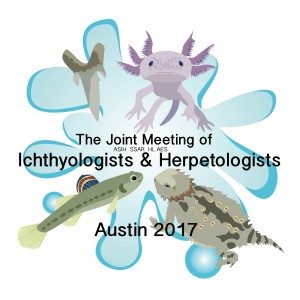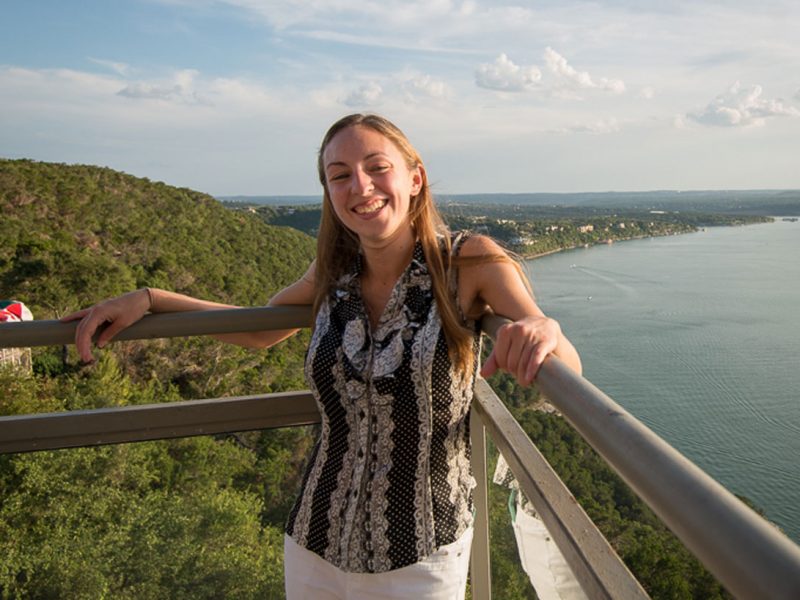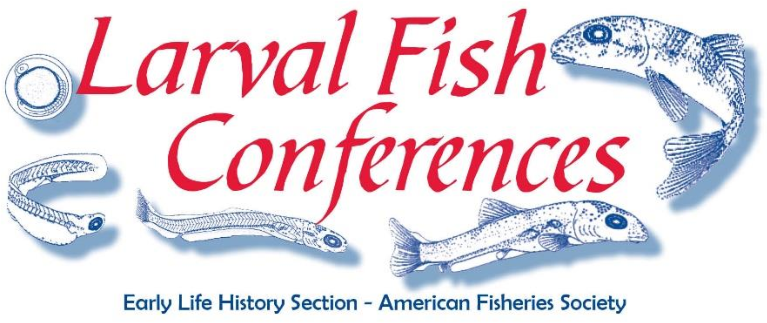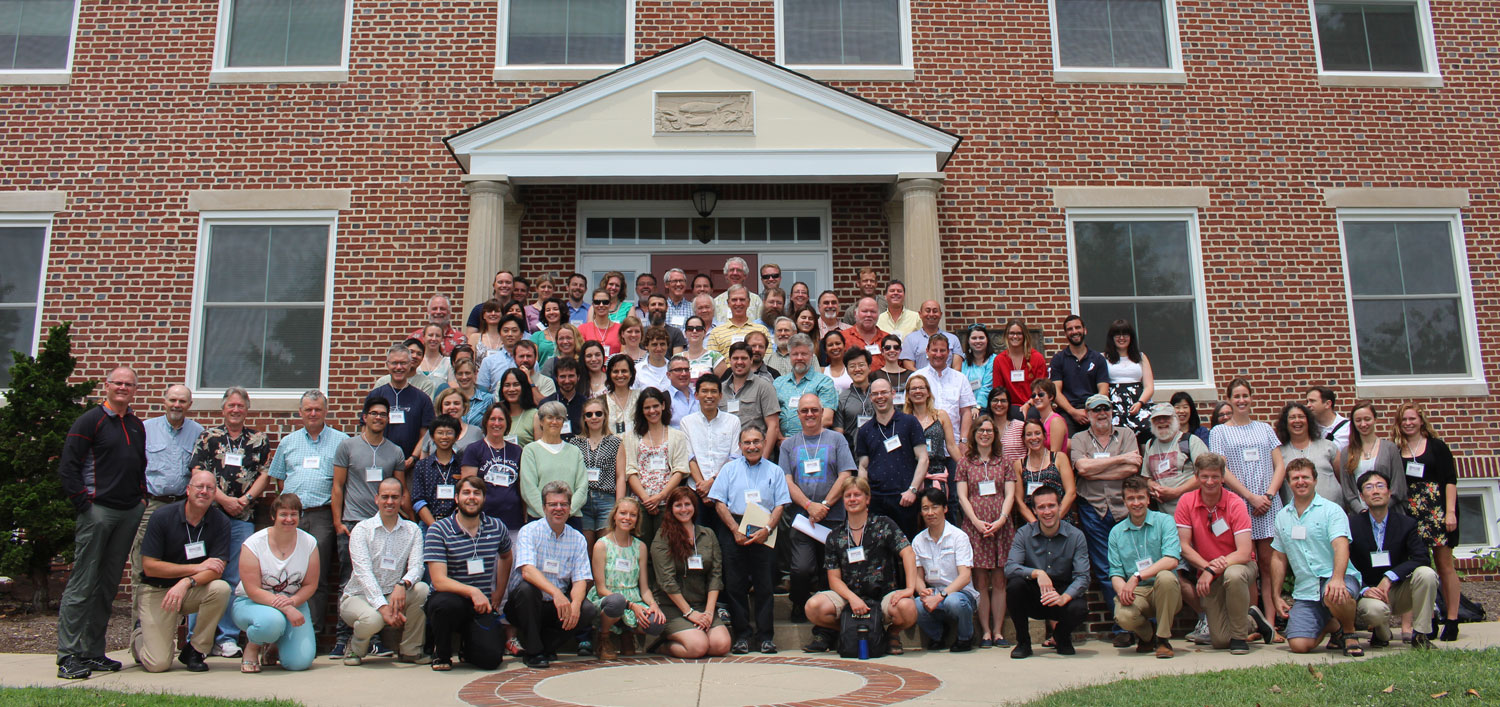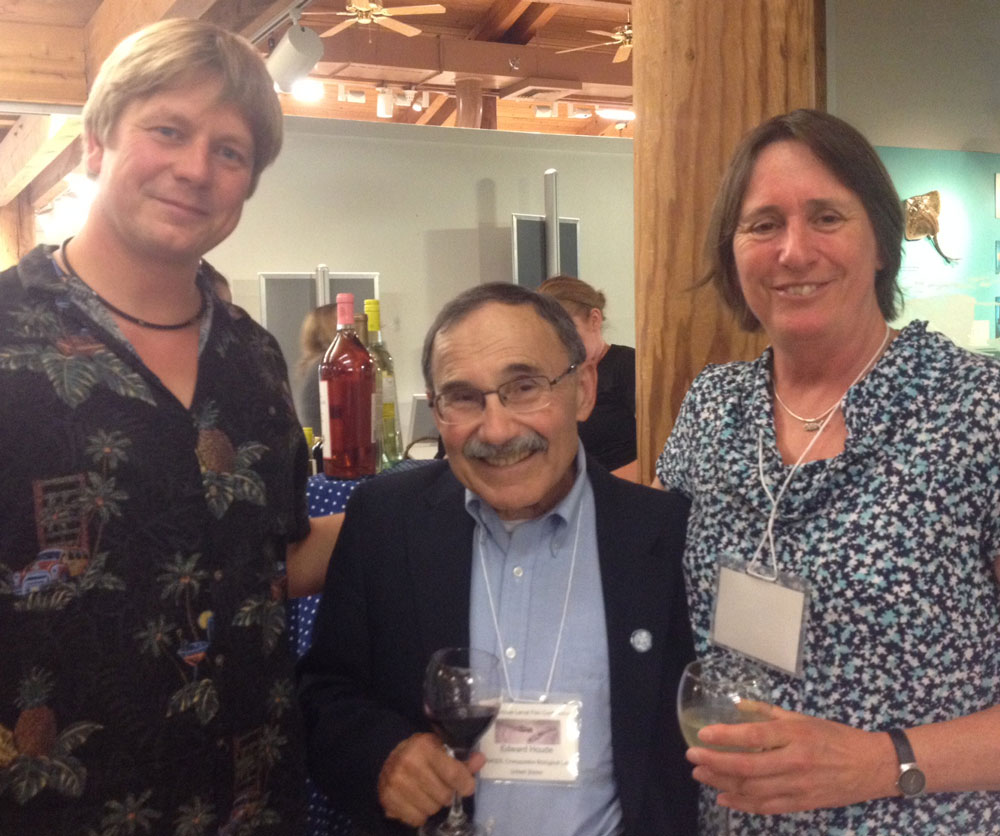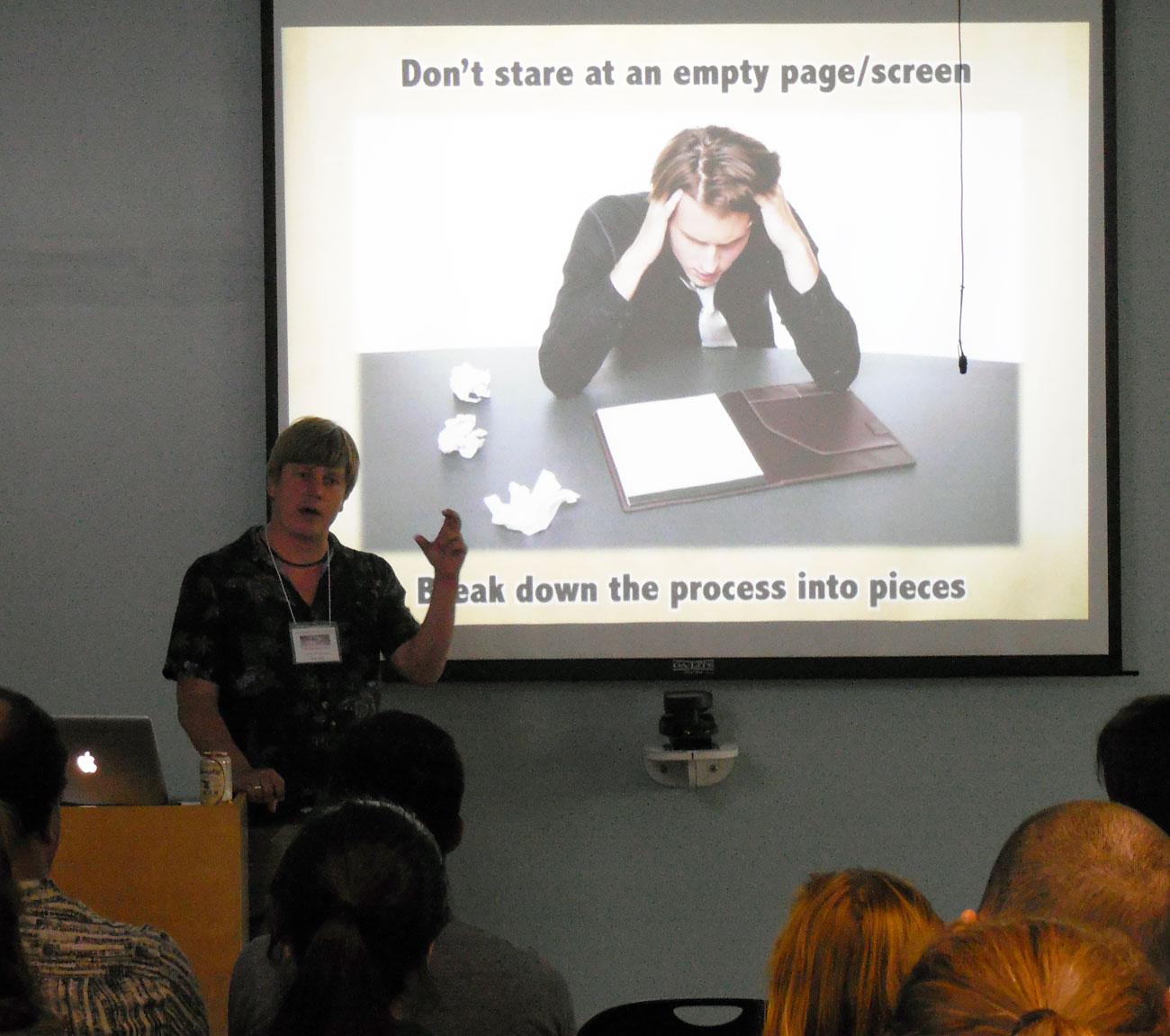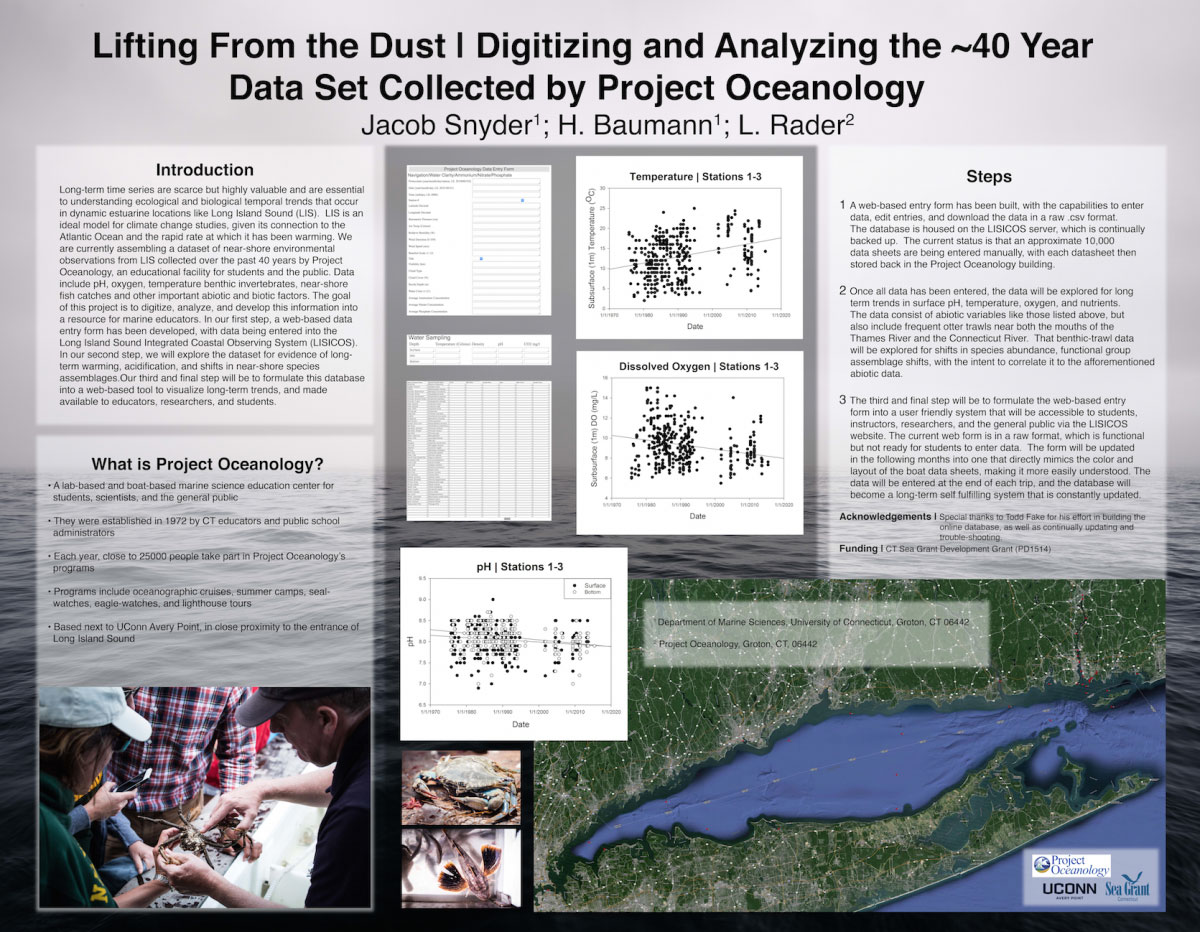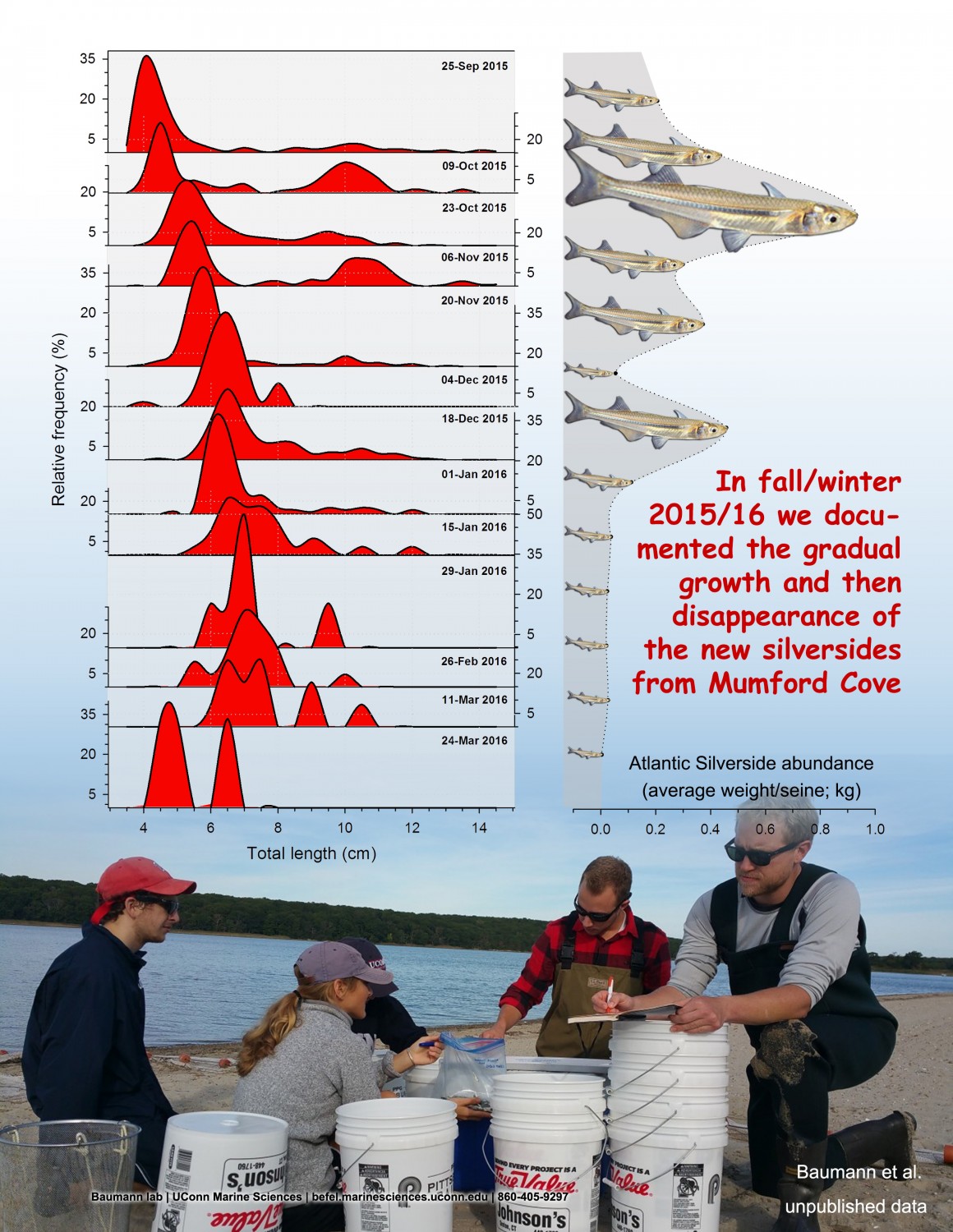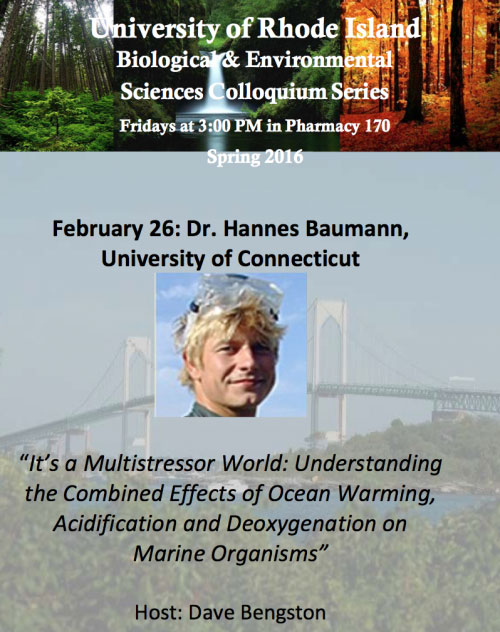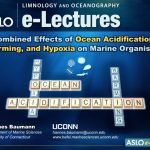From 11-16 July, Hannes, Chris, Jake (Baumann lab, UConn) and Teresa (Nye lab, Stony Brook) were presenting research from our common NSF project at the 41st Larval Fish Conference, organized by the Early Life History Section of the American Fisheries Society in Austin, TX.




Holding the fort and maintaining experiments at Avery Point were James, Julie, and Elle. Thank you for helping out.

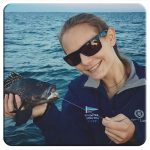

We gave four talks in two sessions:
- Baumann H., Snyder, J.T., and Murray, C.S. 2017. Quantifying offspring CO2-sensitivity in a fish: a meta-analysis.
-
Snyder, J.T., Murray, C.S., and Baumann H. 2017.
Potential for maternal effects on offspring CO2 sensitivity in a coastal marine fish
- Murray, C.S., Snyder, J.T., and Baumann H. 2017. A multi-factorial evaluation of temperature-dependent CO2-effects in a coastal forage fish.
-
Schwemmer, T., Baumann H., and Nye, J. 2017.
Physiological effects of increased temperature and carbon dioxide on Atlantic silverside early life stages <
Here is how Jake rates his first international conference experience:

Jacob Snyder “Austin 2017” photoblog. RedSkiesPhotography




